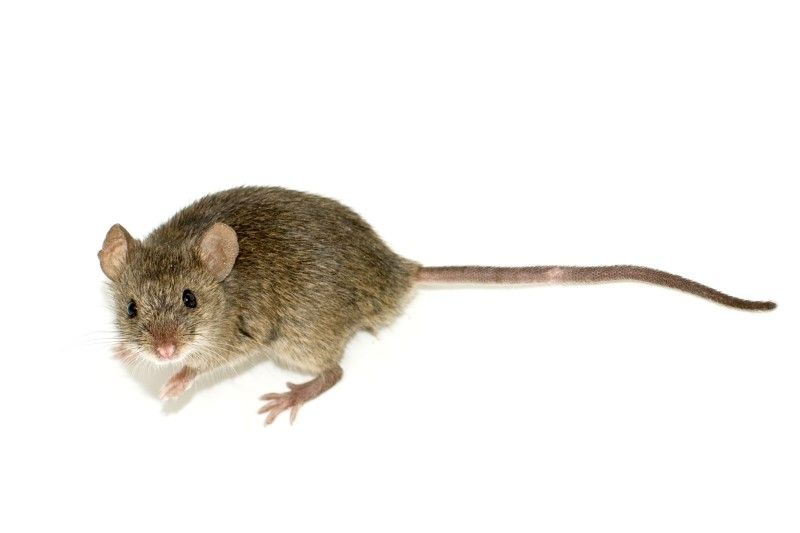House mouse

Status
Naturalised, widespread over most of England and parts of Scotland and Wales
Population
5,200,000
Scientific name
Mus musculus
House mice have long been associated with humans and they have spread along trade routes across much of the world: apart from our own species, the house mouse is thought to be the most widespread mammal in the world. They have been present in Britain since at least the Iron Age. They have grey-brown fur, large pink ears and a long, hairless tail. They can be distinguished from wood and yellow-necked mice by their narrower head and smaller eyes. House mice are mainly nocturnal, usually sleeping during daylight hours. Where food and shelter are scarce, house mice may range over areas of 200 square metres or more; when resources are readily available, home ranges may be as small as five square metres. They are territorial and when individuals are crowded, only a few dominant males hold territories and breed, frequently fighting with each other.
Head-body length: 6 – 10cm
Tail length: As long as the head and body
Weight: 12 – 22g
Lifespan: Up to 18 months in the wild but few survive longer than six months
Reproduction
Five to ten litters of four to eight pups are born in a year. The young are weaned by two weeks and become sexually mature by five to six weeks. In her lifetime, a female may produce about 40 offspring.
Diet
Mainly grain and fruit, but also insects and other invertebrates.
Habitat
Competition with other small mammals means that house mice are rarely found in woodland in Britain; their best known habitat is the built environment, such as houses, food stores, farm buildings and rubbish tips. They also occur in arable land.
Predators
Barn owls, stoats, weasels, rats and domestic cats.
Threats
Severe cold; they are killed as a pest.
Conservation status
As an introduced species, a GB Red List assessment hasn’t been made. Global Red List: Least Concern (LC).
Population size and distribution
GB population: 5,200,000. Locally abundant throughout Britain and Ireland, including most inhabited small islands.
Did you know?
House mice are the mice that can be seen in the tunnels of the London Underground system. They thrive in the warmth and on the rubbish thrown away by commuters.
